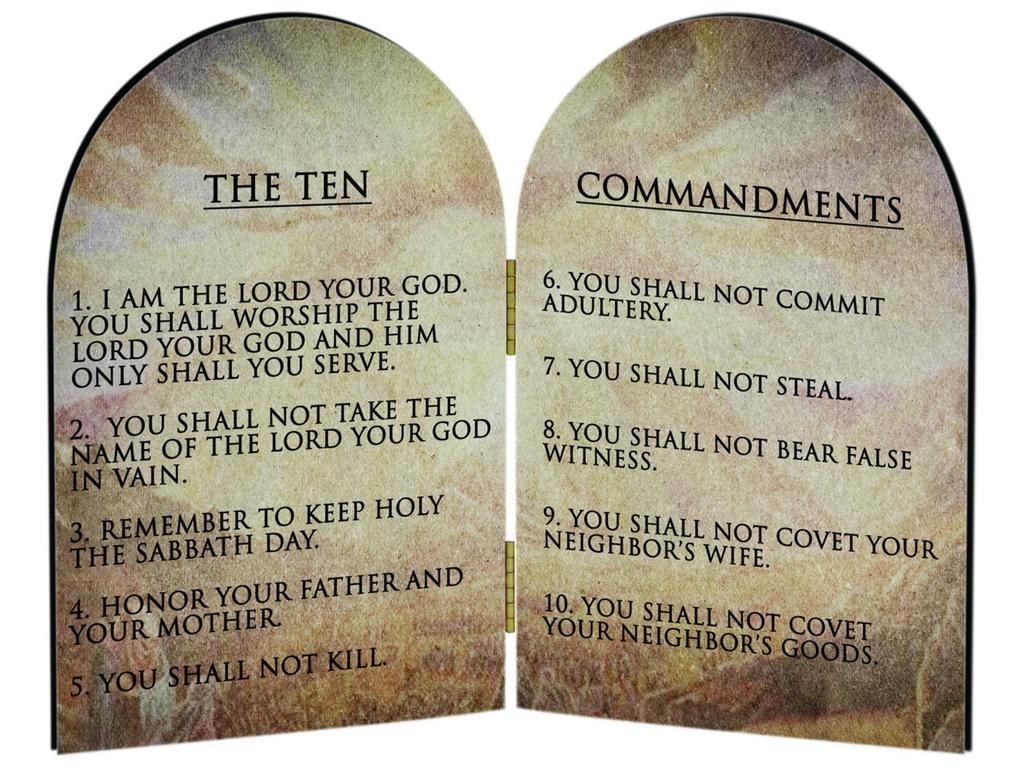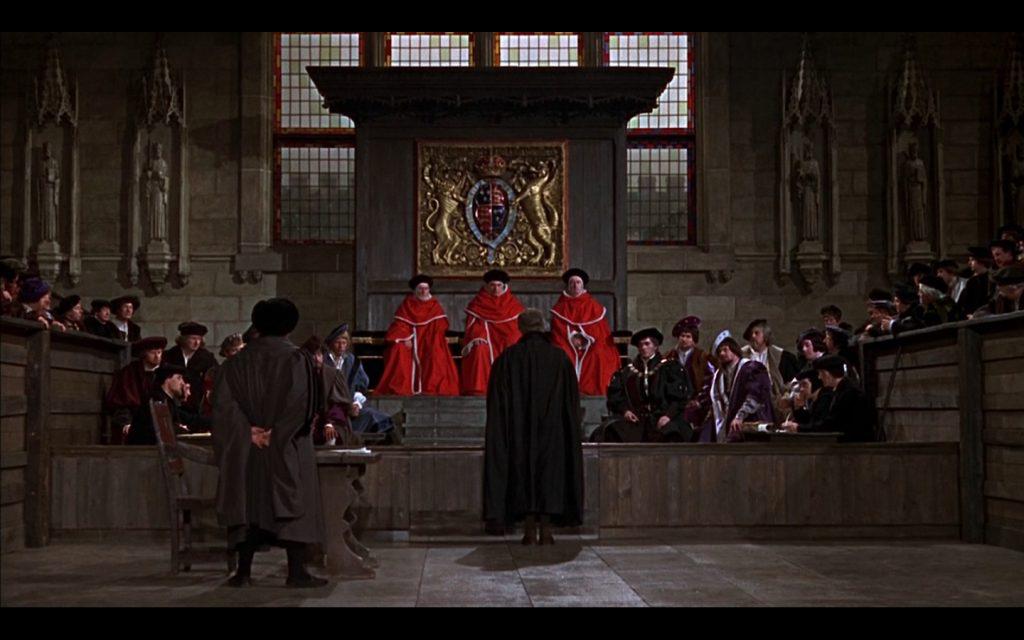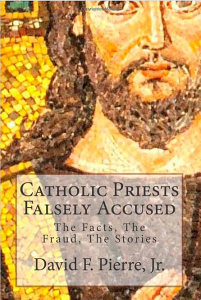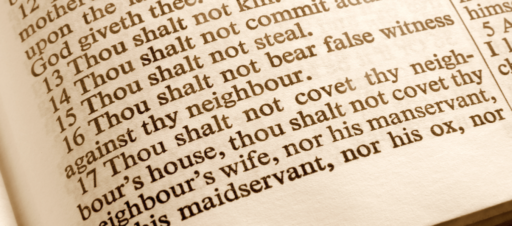|
On the Island of Guam, Is the Eighth Commandment Discarded?
By Fr. Gordon J. Macrae
A prayer is offered for a falsely accused priest at the London prison cell of St Thomas More while on the Island of Guam a new Catholic Inquisition makes its debut.
Sir Thomas More became Saint Thomas More, a martyr for faith and truth when he was executed for “high treason” upon the order of King Henry VIII in 1535. The King demanded complicity from Thomas More in a campaign against the Catholic Church when the Pope denied the King an annulment from his marriage to Catherine of Aragon to marry Anne Boleyn. As Lord Chancellor of England, Thomas More surrendered his favor with the King and his Court to defend his Church and faith. The King’s response set in motion the Protestant Reformation in England. Meanwhile, Henry VIII went on to marry a total of six times. Thomas More, condemned for fidelity to his Catholic faith, was imprisoned in the Tower of London and beheaded on July 6, 1535. His head was mounted on a pole at the Tower of London Bridge. Saint Thomas More was canonized a saint and a martyr 400 years later, and today is honored by the Catholic Church on June 22. On June 22 this year, Dr. Robert Moynihan will visit the London prison cell of Saint Thomas More where, among his prayers, will be offered one for me and for These Stone Walls. Dr. Moynihan is Editor and Publisher of the very fine Inside the Vatican magazine. The prayer was requested by Suzanne Formanek, a TSW reader in Eastern Europe who has asked that readers join that day in a prayer for justice through the intercession of Saint Thomas More. I am most grateful to them both. There is a special significance to this development. Readers may recall our most recent pursuit of justice before a U.S. court. The outcome was described by Catholic writer, Ryan MacDonald in “A Grievous Error in Judge Joseph Laplante’s Court.” It’s worth a short visit to scroll to the last segment of that post to see the great irony of Saint Thomas More’s presence in this story. CATHOLIC SCANDAL & THE RULE OF LAW
I cannot help but ponder, today, how Saint Thomas More might weigh the state of justice and civil liberties on the Western Pacific Island of Guam, the southernmost of the Mariana Islands. For those unfamiliar with the territory, the Marianas were visited by Ferdinand Magellan in 1521 and later colonized by Spain. The island chain was named for Maria Anna, widow of Philip II, King of Spain from 1556 to 1598. In 1898, at the end of the Spanish-American War, Guam was ceded to the United States. The Japanese captured the island in December of 1941, but it was retaken by American forces in the summer of 1944. In 1950, U.S. citizenship was conferred upon the people of Guam which remains a self-governed U.S. territory. Following a trend of reactionary legislative controversies across the United States in the wake of Catholic scandal during the last two decades, the legislature and governor of Guam last year passed and signed into law “Public Law 33-187.” The law opened a window to extend civil statutes of limitations in sex abuse claims against institutions such as the Catholic Church. Saint Thomas More, a lawyer, legislator, and statesman, would likely deem Public Law 33-187 to be contemptible in the arena of human rights and civil liberties. The misguided law opens a retroactive door for lawsuits and other claims for compensation years or decades after existing statutes of limitation have expired. It provides for no standard of justice to separate the real from the contrived. Like the bishops of virtually every American Catholic diocese where such an unjust law was considered, the Guam version was opposed by the Archdiocese of Agana, Guam. It was opposed because it also opens a window to fraud. Most mainland USA legislatures that considered such a law ultimately rejected it as biased and unjust. I wrote the truth, from my own experience, about why such laws are an affront to truth and justice. In “Due Process for Accused Priests,” a 2009 article in Catalyst: the Journal of the Catholic League for Religious & Civil Rights, I described how some states were duped by nefarious agendas into considering “window legislation” similar to what has been passed in Guam. THE FACTS, THE FRAUD, THE STORIES
Those agendas are the fuel that has kept the Catholic scandal in the United States going and growing. Leaders of SNAP – the Survivors Network of those Abused by Priests – used the story of Catholic scandal to promote their own interests and line their own pockets. This latest offshoot of the Catholic scandal is the most recent to be exposed, as it was recently in these pages in “David Clohessy Resigns SNAP in Alleged Kickback Scheme.” There is layer upon layer in the Catholic scandal as it emerges anew in Guam, and the various layers appear to be a blueprint drafted from what has happened across America. First, there is the layer of the cold hard fact that a guarantee of a financial windfall is the end result of virtually every claim. It should come as no surprise to anyone that there are some in our midst who would sell their souls for money. After the September 11, 2001, terrorist attacks on the Pentagon and the Twin Towers in New York, a Commission had to be set up to investigate the rampant fraud attempts of those who claimed to lose loved ones who were not even there. After the infamous BP oil rig explosion and its environmental disaster in the Gulf of Mexico, BP had to set up its own fraud commission to deal with a vast number of fraudulent claims for money. BP took out full-page ads in The Wall Street Journal to describe the multitude of fraud attempts aimed in its direction. There were two waves in the Catholic clergy sexual abuse story. The first wave came in the 1980s when victims and their parents came forward with grave concerns about the behaviors of a very small percentage of priests. In far too many of these cases, bishops failed to use canon law effectively to deal with those situations and instead were too caught up in warding off public scandal. These cases deserved to be compensated and were. The second wave was a tsunami of far older claims. In 2002 The Boston Globe set in motion a classic New England witch hunt that spread its moral panic. The sheer volume and tone of the public face of the scandal eroded civil liberties for all priests. The civil liberty of a presumption of innocence was eliminated, and the floodgates were opened for false claims, most of which were many years or decades old and for which no evidence exists. Of the total claims against priests in the United States, a full 70-percent fall into this second category. They reaped in excess of three billion dollars in uninvestigated, unquestioned abuse settlements. In each case, the accused priests – both the guilty and innocent alike – are ruined, permanently barred from any ministry. Noted Boston Civil Rights attorney Harvey Silverglate described the feeding frenzy in his 2002 article, “Fleecing the Shepherds”:
Recent revelations about lawsuits against David Clohessy and the organizers of S.N.A.P. allege a partnership with personal injury lawyers and the manipulation of a scandal-hungry media. I wrote of this phenomenon in “How SNAP Brought McCarthyism to American Catholics.” By no means does this imply that all claims are false. It means that those most offended and harmed by false claims are, not only the priests and dioceses that are the targets of fraud, but also the legitimate victims of abuse whose suffering becomes tainted, suspected and cheapened when the floodgates are opened to invite false claims. Opposing fraud is part of the sacred trust owed to real victims of abuse. THE EIGHTH COMMANDMENT IS AT THE HEART OF JUSTICE
David F. Pierre chronicles many such accounts in his landmark book, Catholic Priests Falsely Accused: The Facts, the Fraud, the Stories. It exposes one chilling tale after another of priests whose careers and reputations were ruined by false claims of abuse (including, for full disclosure, a chapter about claims against me). Before the law was passed in Guam, the Archbishop of Agana was himself accused of abuse dating back many years. Cardinal Raymond Burke was sent by the Vatican to investigate the case, but reportedly some of the accusers have declined to answer any questions while waiting for the Church’s ATM to open. One brave Catholic blogger in Guam has taken up the necessary discussion that the mainstream news media refuses to have. Armed with the journalistic skepticism that was once the hallmark of the American press, “Diana,” on her blog, the Neocatechumenal Way – An Insider’s View, has almost single-handedly brought sanity and truth to the moral panic as it now emerges anew in Guam. Diana deserves to have her voice heard and shared. Ironically, one of her most-cited sources has been the writings at These Stone Walls, and especially two that she posted on May 4, 2017, under the titles, “The Injustice Against Father Gordon MacRae,” and “Civil Liberties of the Priests.” When these were printed and sent to me, I was so very proud to see comments posted on them by some of the readers of These Stone Walls. I also noticed that most of the local comments were posted anonymously. The reason, I am told, is that the various agendas behind this story have as much to do with quarrels over property and finances than with child protection policies. Commenters fear public ridicule or retaliation for posting their opinions. In such struggles – and Guam has been no exception – great polarization takes place. The result may well be a local sex abuse scandal that has become just one more weapon in the arsenal of hidden agendas and scurrilous motives. The sole entity for whom none of the secret agendas remains hidden is God Himself. He notes every keystroke written by accusers and defenders alike and knows also the state of the hearts and souls behind them. This is not a new story. The Eighth Commandment, “Thou shalt not bear false witness against thy neighbor,” (Exodus 20:16) also commands certain elements in the law that must remain intact for the Commandment to remain God’s Law. One of these elements is that hearsay, rumor, and innuendo are simply not good enough to bring a charge – not even for God. Harvard Law Professor Alan Dershowitz in The Genesis of Justice (Warner Books, 2000) describes the origin of the Eighth Commandment as being a false accusation of sexual abuse brought against Joseph by Potiphar’s wife (Genesis 39:6-20):
When false witness results in profit, God’s law reveals it as the vilest of betrayals of the law. Jezebel did “what is evil in the sight of God” when she obtained profit from false witness against Ahab (1 Kings 21: 8-14). The law requires that:
As for Guam’s embrace of Public Law 33-187 and any potential for its role in violations of the Eighth Commandment:
|
.
Any original material on these pages is copyright © BishopAccountability.org 2004. Reproduce freely with attribution.



